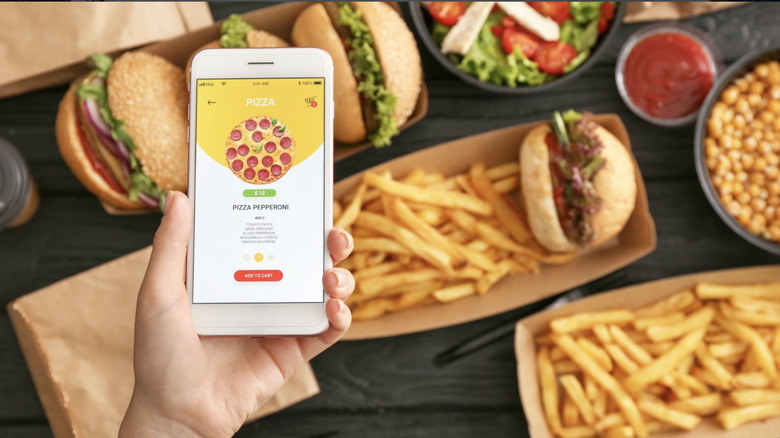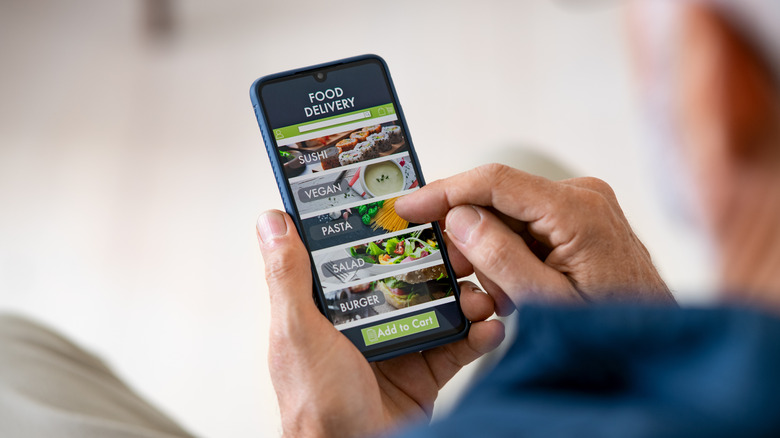The Real Reason Some Restaurants Have Started To Limit Delivery Hours
Food delivery has arguably been one of the biggest heroes of the past two years. During the months of lockdown that shut down dining rooms due to social distancing requirements, apps like Grubhub, DoorDash, and Postmates helped countless eateries stay afloat. It was a temporary fix, though — or so we thought. Even though many restaurants have reopened for dine-in service, delivery remains popular. Nation's Restaurant News found that, in November 2021, 43% percent of consumers opted to order in at least once a month. 71% of millennials did so at least once a week.
While many of us have grown accustomed to delivery, it seems restaurants aren't as thrilled about it. In fact, you might have noticed lately when you've opened your delivery app that your usual go-to restaurants haven't been available for takeout at certain times. Nope, it's not a glitch. The Wall Street Journal reported that many major restaurant chains are greying out access to delivery, particularly during peak hours.
But why would a business limit the potential for more sales? For one, Dine Brands CEO John Peyton told the Wall Street Journal that reducing delivery demands allows staff to prioritize dine-in guests. That's especially important, he says, as people start going out for meals during the busy holiday season. But cutting takeout isn't always about the customer experience. Sometimes it's simply a matter of logistics.
Delivery orders are not always profitable
Whether you're talking about a small mom-and-pop or a large-scale chain, the reality is that allowing food delivery on top of dining service is a serious challenge. Darden CEO Gene Lee told the Wall Street Journal that even though his restaurants "only take four orders to go every 15 minutes" (likely in an effort to not overwhelm the kitchen) they usually have more than four orders coming in at a time. "We have excess demand," he said.
Depending on a restaurant's volume, there may be a need to hire a separate person just to handle takeout orders, which isn't always financially feasible. It certainly doesn't help that restaurants are struggling to hire and retain staff, leaving current employees responsible for handling an increasing workload.
Moreover, despite delivery expanding the overall customer base, it's not necessarily good for business. For every online order made through a third-party app, the services take an average 15% cut. And unless a restaurant is willing to risk raising its prices, then these sales aren't always worth the extra effort. For many, then, it makes more sense to press pause on delivery and focus on ensuring in-house operations run efficiently so people come back. Why would they dedicate extra resources to services that cut into their earnings?
Now, before you panic, know you won't necessarily have to give up delivery entirely. Just try to be more thoughtful about when you order. Instead of Saturday night, try doing takeout Tuesday instead.

